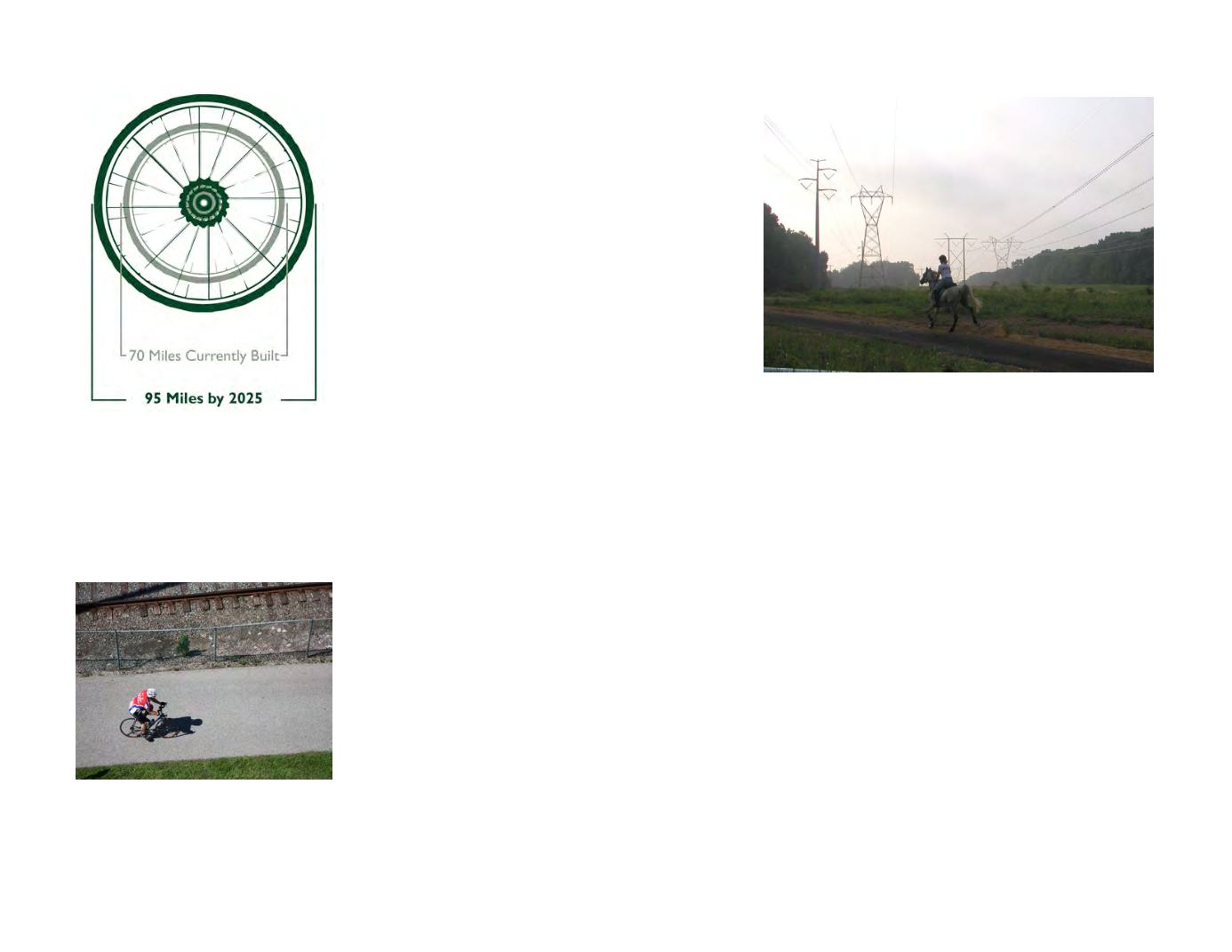
montgomery county today
85
Design, Safety, and Maintenance Issues
Trail Design:
County trail design standards and
specifications have not changed significantly in the past
ten years. This can be attributed to following best trail
design principles created by governmental and non-profit
trail agencies. Key agencies like the Federal Highway
Administration, American Association of State Highway
and Transportation Officials, PennDOT, PA DCNR, Rails
to Trails Conservancy, as well as the Americans with
Disabilities Act help shape the county’s nationally
recognized trail system.
Today, the county can build a 12-foot wide asphalt trail,
one mile long for approximately $150,000 (excluding
stabilizing structures, culverts, and pedestrian signals). A
well constructed trail has over a 30-year life cycle and is
open to all users free of cost. The return of investment is
unparalleled regarding initial cost and actual life cycle of
the public facility.
Safety Issues:
In the early years of trail planning, a
majority of residents were fearful of trails in their
neighborhoods. Many had misconceptions that trails
would create criminal corridors and promote trespassing.
Through educational workshops, community meetings,
and field trips to existing trails, the majority dissolved
their misconceptions and realized the multitude of
tangible benefits.
Currently, trails are in demand from the local level up to
the national level. The county receives significantly more
requests to build more trail mileage and to upgrade
existing trails than it did before. The consensus and
present movement points to trails as a positive asset for
any community, town, or city. Montgomery County has
not been alone in meeting the recreational and alternative
transportation needs of the region. Municipalities
including Lower Salford, Horsham, Upper Dublin, Lower
Merion, Worcester, and Skippack Townships have built
regional segments or remarkable local systems with
connecting opportunities.
Ongoing Maintenance:
All trail development projects
should include a maintenance and operational plan with
short and long term budget projections. Montgomery
County develops a plan for each trail project. This critical
step ensures proper upkeep of the trail corridors and creates
a pleasing and consistent experience for the user.
Montgomery County diligently enhances, promotes, and
protects these valuable assets. The county strives to
provide all trail visitors with an exceptional, healthy, and
alternative transportation experience while traversing on
foot, bicycle, or even horseback.


